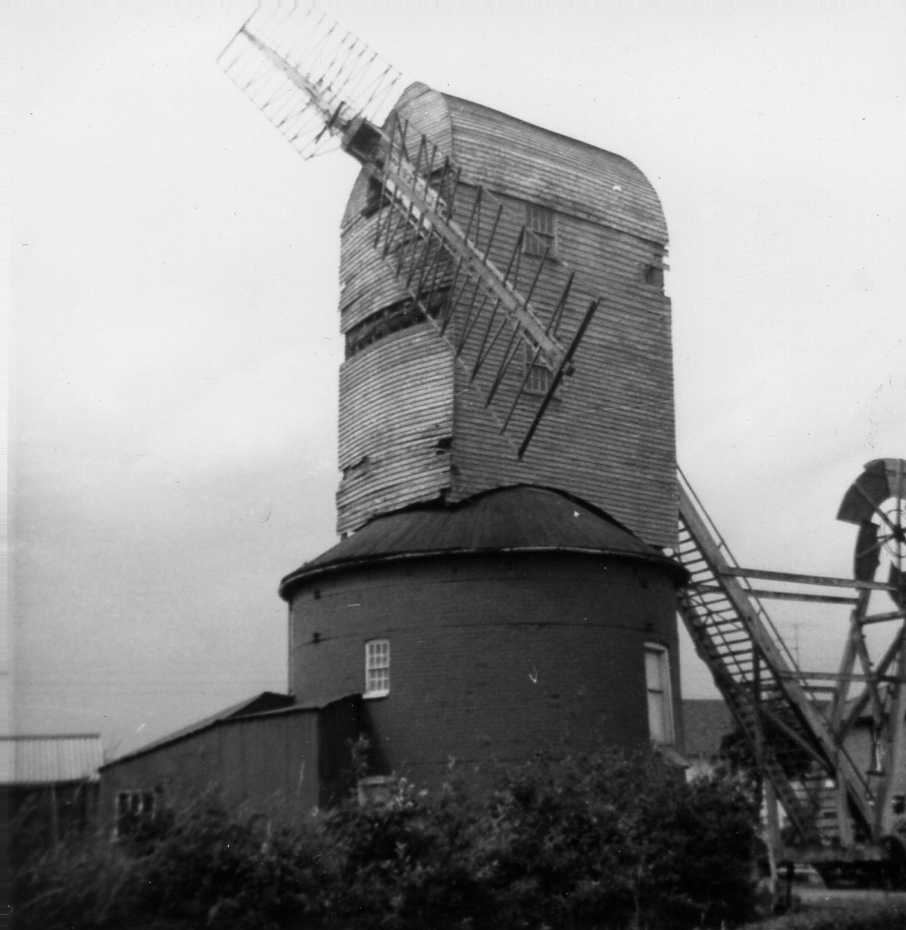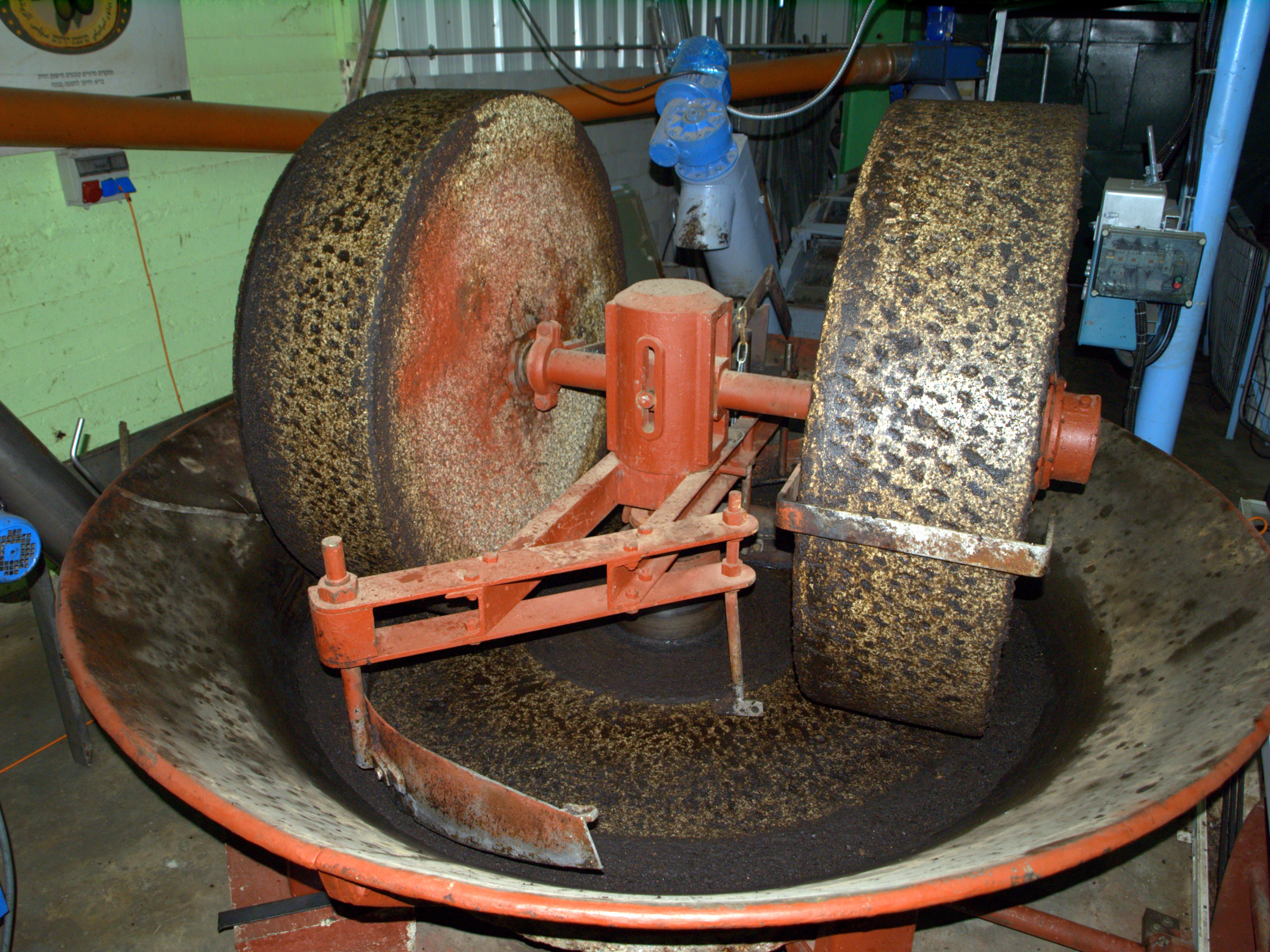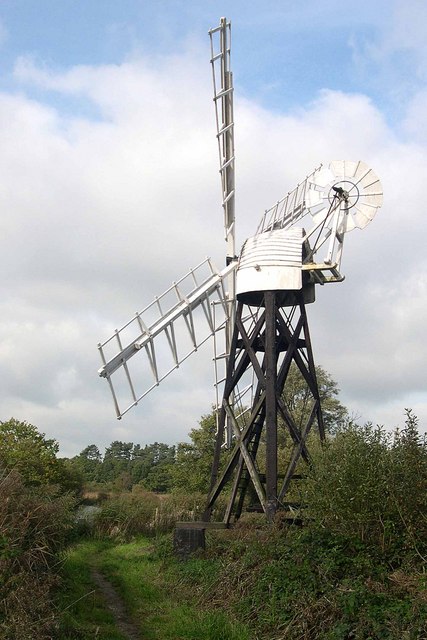|
Friston Windmill
Friston Windmill is a Listed building, Grade II* listed post mill at Friston, Suffolk, England which has been conserved. History ''Friston Windmill'' was moved from Woodbridge, Suffolk, Woodbridge by Collins, the Melton, Suffolk, Melton millwright in 1812 and erected on land purchased by William and Mary Scarlett. They sold the mill to Joseph Collings in 1812. The mill was worked by several different millers until 1837 when it was purchased by Joshua Reynolds from Knodishall. The mill passed to Caleb Reynolds Wright in 1883 and to his son Caleb Reynolds Wright Jr. in 1924. A pair of sails was removed in 1943 and not replaced due to the shortage of timber. The mill worked on two sails until 1956 and then by a diesel engine until 1964. In 1965, planning permission, permission was granted for the demolition of the mill but this was not carried out. Due to changes in planning law, permission had to be sought again in 1968. Villagers were divided as to whether the mill should be kep ... [...More Info...] [...Related Items...] OR: [Wikipedia] [Google] [Baidu] |
Grist Mill
A gristmill (also: grist mill, corn mill, flour mill, feed mill or feedmill) grinds cereal grain into flour and Wheat middlings, middlings. The term can refer to either the grinding mechanism or the building that holds it. Grist is grain that has been separated from its chaff in preparation for mill (grinding), grinding. History Early history The Greek geographer Strabo reported in his ''Geography'' that a water-powered grain-mill existed near the palace of king Mithradates VI Eupator at Cabira, Asia Minor, before 71 BC. The early mills had horizontal paddle wheels, an arrangement which later became known as the "Norse wheel", as many were found in Scandinavia. The paddle wheel was attached to a shaft which was, in turn, attached to the centre of the millstone called the "runner stone". The turning force produced by the water on the paddles was transferred directly to the runner stone, causing it to grind against a stationary "Mill machinery#Watermill machinery, bed", a ... [...More Info...] [...Related Items...] OR: [Wikipedia] [Google] [Baidu] |
Museum Of East Anglian Life
The Food Museum, formerly the Museum of East Anglian Life, is a museum in Stowmarket, Suffolk, England focused on the farming and food production industries. It consists of an 84-acre estate and 17 historic buildings. History of the Museum The land was originally part of the Abbot’s Hall estate. The estate dates from medieval times, when it was an outlying manor for St Osyth's Priory in Essex. It passed through numerous owners until it was purchased by the Spixworth Park, Longe family in 1903. Farmer Jack Carter, the Suffolk Local History Council, and others had collected, preserved and displayed objects from rural East Anglia. After several years of temporary exhibitions at other places, Vera and Ena Longe donated 1.38 acres of land including Stowmarket's oldest building, a Grade II* Medieval Barn to be used as a permanent site for the museum. The Museum opened in 1967. In 1970, they placed the rest of their land, including of farmland, the Grade II* listed house Abbot’s ... [...More Info...] [...Related Items...] OR: [Wikipedia] [Google] [Baidu] |
Grinding Mills In The United Kingdom
Grind is the cross-sectional shape of a blade. Grind, grinds, or grinding may also refer to: Grinding action * Grinding (abrasive cutting), a method of crafting * Grinding (dance), suggestive club dancing * Grinding (video gaming), repetitive and uninteresting gameplay * Bruxism, grinding of the teeth * Grind (sport), a sliding stance usually performed in extreme sports such as aggressive skating and boardsports ** Grind (skateboarding) * Grind (whaling), pilot whale hunting in the Faroe Islands * Grinds, private tutoring, in Ireland * Mill (grinding) * Grinding, the operation of the winches on a yacht; the work done by a grinder (sailing position) Geography * Grind, a village in Lăpugiu de Jos Commune, Hunedoara County, Romania * Grind (Unirea), a tributary of the Unirea in Cluj and Alba Counties, Romania Film and TV * ''Grind'' (2003 film), about amateur skaters * ''The Grind'' (1915 film), a silent movie * ''Grind'' (1997 film), starring Billy Crudup and Adrienne Shell ... [...More Info...] [...Related Items...] OR: [Wikipedia] [Google] [Baidu] |
Windmills Completed In 1812
A windmill is a machine operated by the force of wind acting on vanes or sails to mill grain (gristmills), pump water, generate electricity, or drive other machinery. Windmills were used throughout the high medieval and early modern periods; the horizontal or panemone windmill first appeared in Persia during the 9th century, and the vertical windmill first appeared in northwestern Europe in the 12th century. Regarded as an icon of Dutch culture, there are approximately 1,000 windmills in the Netherlands today. Forerunners Wind-powered machines have been known earlier, the Babylonian emperor Hammurabi had used wind mill power for his irrigation project in Mesopotamia in the 17th century BC. Later, Hero of Alexandria (Heron) in first-century Roman Egypt described what appears to be a wind-driven wheel to power a machine.Dietrich Lohrmann, "Von der östlichen zur westlichen Windmühle", ''Archiv für Kulturgeschichte'', Vol. 77, Issue 1 (1995), pp. 1–30 (10f.) A. G. Dra ... [...More Info...] [...Related Items...] OR: [Wikipedia] [Google] [Baidu] |
Post Mills In The United Kingdom
Post, POST, or posting may refer to: Postal services * Mail, the postal system, especially in Commonwealth of Nations countries **An Post, the Irish national postal service **Canada Post, Canadian postal service **Deutsche Post, German postal service ** Iraqi Post, Iraqi postal service **Russian Post, Russian postal service **Hotel post, a service formerly offered by remote Swiss hotels for the carriage of mail to the nearest official post office **United States Postal Service or USPS **Parcel post, a postal service for mail that is heavier than ordinary letters Work * Post, a job or occupation Newspaper * '' The Manica Post'' Regional newspaper in Manicaland province, Zimbabwe * '' The Rakyat Post'' Malaysian online daily newspaper * ''Bangkok Post'' English language newspaper in Thailand Architecture and structures * Lamppost, a raised source of light on the edge of a road *Post (structural), timber framing *Post and lintel, a building system * Scratch post * Steel fence ... [...More Info...] [...Related Items...] OR: [Wikipedia] [Google] [Baidu] |
Windmills In Suffolk
A windmill is a machine operated by the force of wind acting on vanes or windmill sail, sails to mill (grinding), mill grain (gristmills), pump water, generate electricity, or drive other machinery. Windmills were used throughout the High Middle Ages, high medieval and early modern periods; the horizontal or panemone windmill first appeared in Persia during the 9th century, and the vertical windmill first appeared in northwestern Europe in the 12th century. Regarded as an icon of Culture of the Netherlands, Dutch culture, there are approximately 1,000 windmills in the Netherlands today. Forerunners Wind-powered machines have been known earlier, the Babylonian emperor Hammurabi had used wind mill power for his irrigation project in Mesopotamia in the 17th century BC. Later, Hero of Alexandria (Heron) in first-century Roman Egypt described what appears to be a wind-driven wheel to power a machine.Dietrich Lohrmann, "Von der östlichen zur westlichen Windmühle", ''Archiv ... [...More Info...] [...Related Items...] OR: [Wikipedia] [Google] [Baidu] |
Grade II* Listed Windmills
Grade most commonly refers to: * Grading in education, a measurement of a student's performance by educational assessment (e.g. A, pass, etc.) * A designation for students, classes and curricula indicating the number of the year a student has reached in a given educational stage (e.g. first grade, second grade, K–12, etc.) * Grade (slope), the steepness of a slope * Graded voting Grade or grading may also refer to: Music * Grade (music), a formally assessed level of profiency in a musical instrument * Grade (band), punk rock band * Grades (producer), British electronic dance music producer and DJ Science and technology Biology and medicine * Grading (tumors), a measure of the aggressiveness of a tumor in medicine * The Grading of Recommendations Assessment, Development and Evaluation (GRADE) approach * Evolutionary grade, a paraphyletic group of organisms Geology * Graded bedding, a description of the variation in grain size through a bed in a sedimentary rock * Metamorphic ... [...More Info...] [...Related Items...] OR: [Wikipedia] [Google] [Baidu] |
Friston Mill
Friston is a village and civil parish in the East Suffolk district, in the county of Suffolk, England. It is southeast of Saxmundham, its post town, and northwest of Aldeburgh. The River Alde bounds the village on the south. The surrounding land is chiefly arable. The soil becomes partly marshy in the lower grounds. The village is noted for its early nineteenth century post mill. It is located next to the village of Knodishall. In 2011 the parish had a population of 344. Its name is recorded in the Domesday Book as ''Frisetuna'' and seems to come from Anglo-Saxon ''Frīsa tūn'' = "the farmstead of the Frisians"; some of them may have come with the Angles and Saxons. An alternative name for the parish is Freston. In 1887, John Bartholomew described Friston as:Friston, par. and vil., E. Suffolk, 3 miles SE. of Saxmundham, 1846 ac., pop. 385; P.O.; in NW. vicinity of vil. is Friston Hall. History Thomas Bacon owned Friston Hall until he sold it in 1674. On 1 April 1934 ... [...More Info...] [...Related Items...] OR: [Wikipedia] [Google] [Baidu] |
Millstone
Millstones or mill stones are stones used in gristmills, used for triturating, crushing or, more specifically, grinding wheat or other grains. They are sometimes referred to as grindstones or grinding stones. Millstones come in pairs: a stationary base with a convex rim known as the bedstone (or nether millstone) and a concave-rimmed runner stone that rotates. The movement of the runner on top of the bedstone creates a "scissoring" action that grinds grain trapped between the stones. Millstones are constructed so that their shape and configuration help to channel ground flour to the outer edges of the mechanism for collection. The runner stone is supported by a cross-shaped metal piece ( millrind or rynd) fixed to a "mace head" topping the main shaft or spindle leading to the driving mechanism of the mill (wind, water (including tide), or other means). History The origins of an industry Often referred to as the "oldest industry", the use of the millstone is inextr ... [...More Info...] [...Related Items...] OR: [Wikipedia] [Google] [Baidu] |
Friston Mill 1965
Friston is a village and civil parish in the East Suffolk district, in the county of Suffolk, England. It is southeast of Saxmundham, its post town, and northwest of Aldeburgh. The River Alde bounds the village on the south. The surrounding land is chiefly arable. The soil becomes partly marshy in the lower grounds. The village is noted for its early nineteenth century post mill. It is located next to the village of Knodishall. In 2011 the parish had a population of 344. Its name is recorded in the Domesday Book as ''Frisetuna'' and seems to come from Anglo-Saxon ''Frīsa tūn'' = "the farmstead of the Frisians"; some of them may have come with the Angles and Saxons. An alternative name for the parish is Freston. In 1887, John Bartholomew described Friston as:Friston, par. and vil., E. Suffolk, 3 miles SE. of Saxmundham, 1846 ac., pop. 385; P.O.; in NW. vicinity of vil. is Friston Hall. History Thomas Bacon owned Friston Hall until he sold it in 1674. On 1 April 1934 ... [...More Info...] [...Related Items...] OR: [Wikipedia] [Google] [Baidu] |
Trestle (mill)
The trestle of a post mill is the arrangement of the ''main post'', ''crosstrees'' and ''quarterbars'' that form the substructure of this type of windmill. It may or may not be surrounded by a ''Roundhouse (windmill), roundhouse''. Post mills without a roundhouse are known as ''open trestle post mills''. A trestle mill is a variety of smock mill, usually without weatherboards, formerly used for drainage in the Norfolk Broads. Examples can be found at Horning, Ludham and St Olaves. A well preserved example of a timber crosstree, from the trestle of a medieval windmill, was excavated by archaeologists at Humberstone_and_Hamilton, Humberstone, near Leicester, in 2007. References Bibliography * * * * {{Renewable-energy-stub Post mills Smock mills ... [...More Info...] [...Related Items...] OR: [Wikipedia] [Google] [Baidu] |
English Heritage
English Heritage (officially the English Heritage Trust) is a charity that manages over 400 historic monuments, buildings and places. These include prehistoric sites, a battlefield, medieval castles, Roman forts, historic industrial sites, Listed building, listed ruins, and architecturally notable English country houses. The charity states that it uses these properties to "bring the story of England to life for over 10 million people each year". Within its portfolio are Stonehenge, Dover Castle, Tintagel Castle, and the "best-preserved" parts of Hadrian's Wall. English Heritage also manages the London blue plaque scheme, which links influential historical figures to particular buildings. When originally formed in 1983, English Heritage was the operating name of an executive non-departmental public body of the Her Majesty's Government, British Government, officially titled the Historic Buildings and Monuments Commission for England, that ran the national system of heritage prot ... [...More Info...] [...Related Items...] OR: [Wikipedia] [Google] [Baidu] |






